How to Make Macarons
Learn how to make macarons with this step-by-step guide and video tutorial! These helpful tips and tricks will set you up for success.
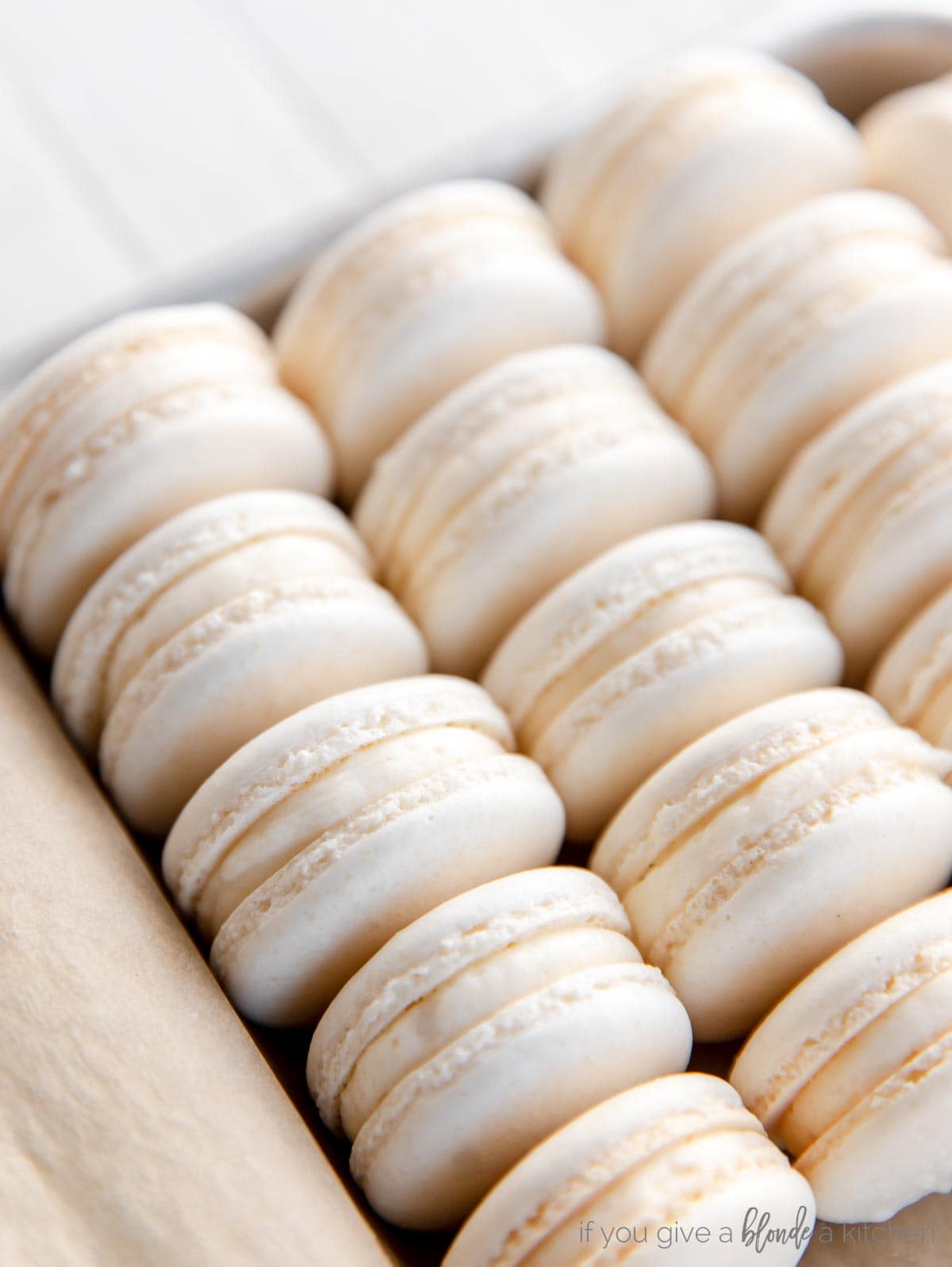
French macarons are a finicky French cookie that is challenging to make, but oh-so-satisfying when done successfully. Today I am going to reveal all the macaron secrets I learned during my many trial and errors. I tried all the methods in hopes that you only have to try once!
Why this recipe works: This recipe works because of the detail included in this post. I’m sharing all the tips and tricks I learned while baking dozens of macarons. There is a method to making macarons and here it is!
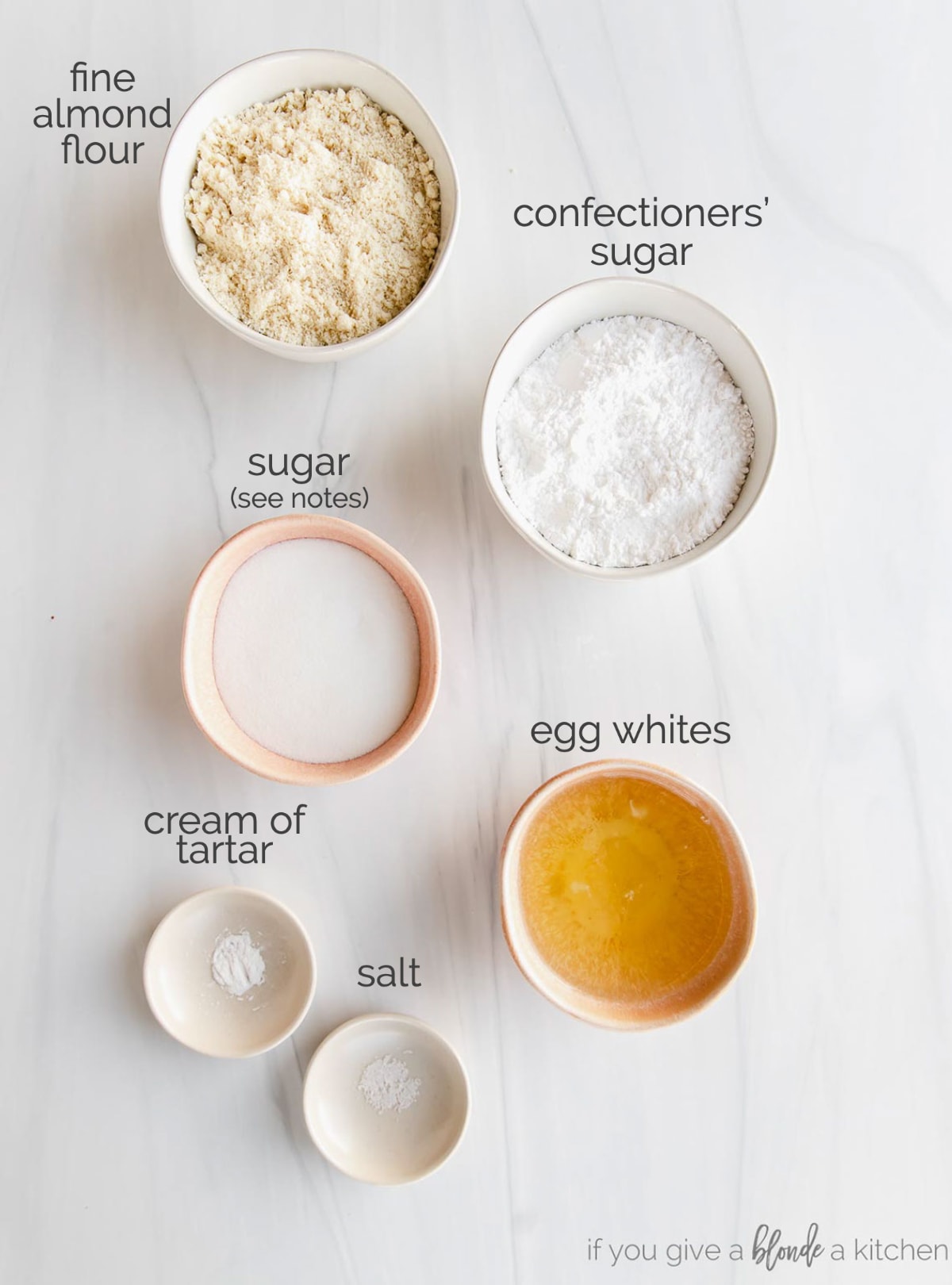
French macaron ingredients
Before getting started on the steps, let’s go over the ingredients for French macarons. This is relatively important for this cookie! Egg whites must be completely free of any yolk and at room temperature. You will need to dehydrate them overnight by leaving them in a container covered in plastic wrap with holes poked in it.
Almond flour is a must for these cookies. Any fine almond flour will do. I personally prefer King Arthur Flour Grain-Free Almond Flour. You will need two types of sugar: confectioners’ sugar and bakers sugar. Bakers sugar is a superfine granulated sugar. If you can’t find it, granulated will work. You can also process granulated in a food processor for 10 one-second pulses to make it fine. Finally, cream of tartar will help add volume to the egg whites when making the batter.
Why do you dehydrate egg whites for macarons?
This is an extra step, but I found to be necessary. The extra liquid in the macarons will evaporate. If the egg whites aren’t dehydrated then the batter will be too runny. Additionally, this step will help relax the proteins to form stiffer peaks while whipping the batter.
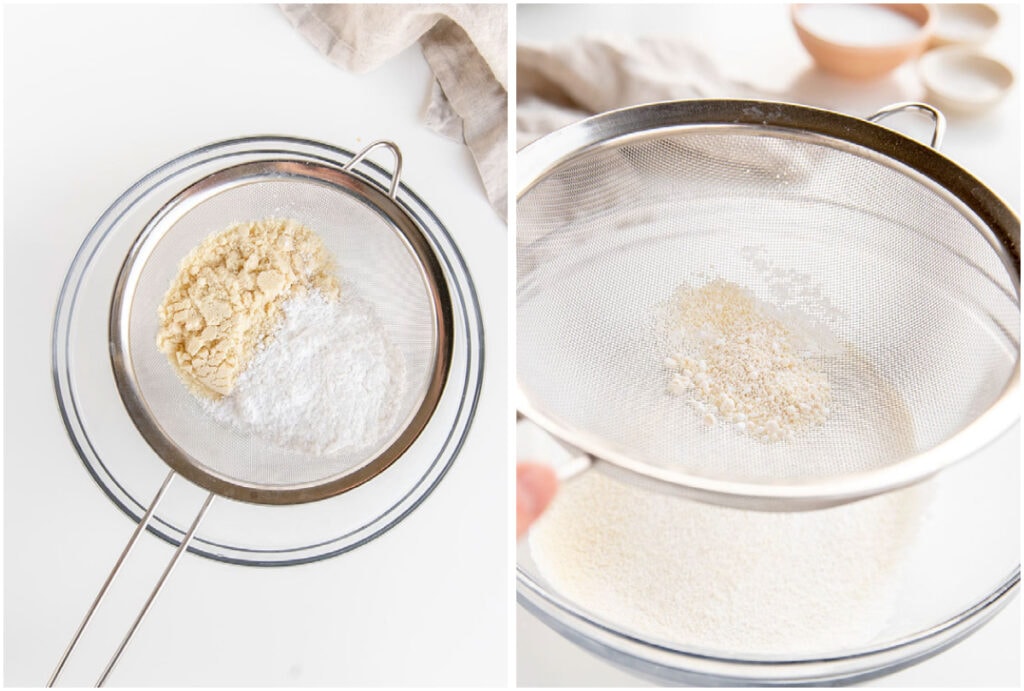
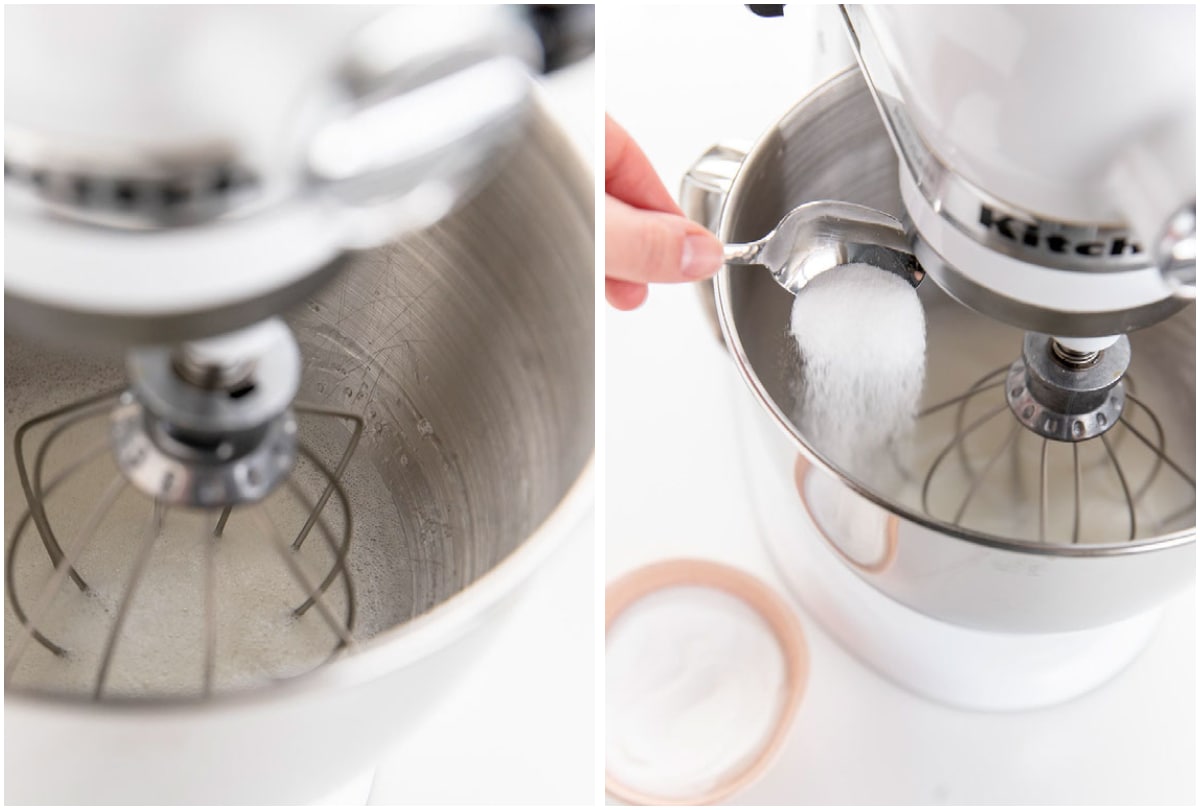
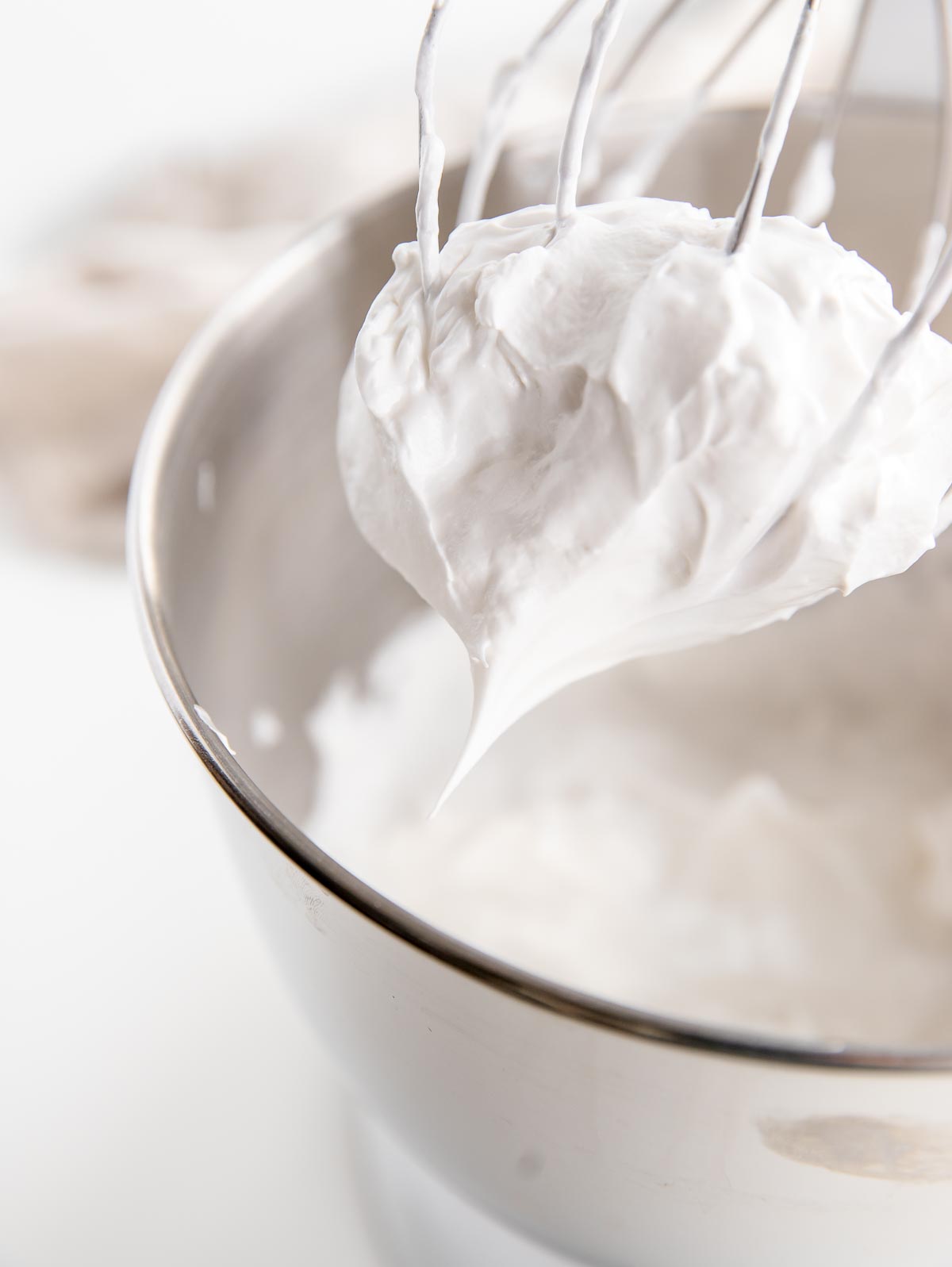
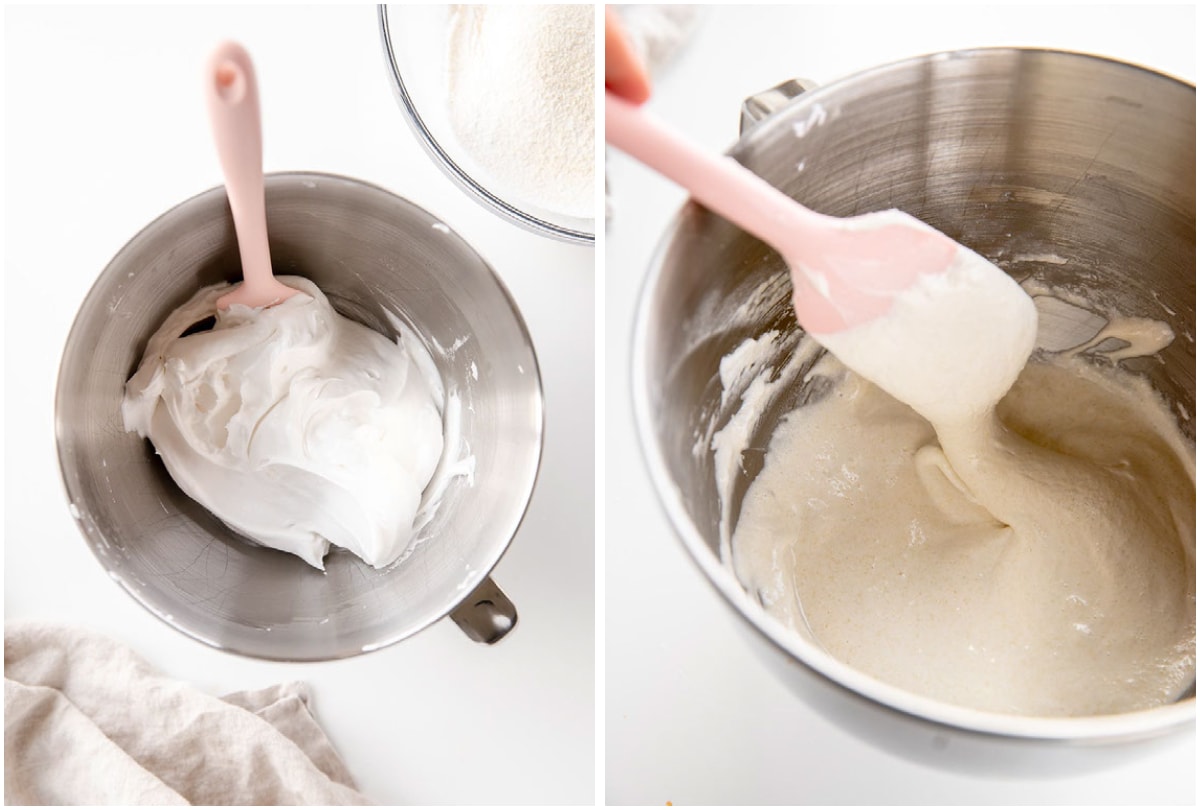
Overview: How to make macarons
- Dehydrate the egg whites (leave out overnight).
- Sift the almond flour and confectioners’ sugar three times. Set aside.
- Beat egg whites, cream of tartar and salt until frothy. Add bakers sugar and beat until stiff peaks form, about 5 minutes.
- Fold the dry ingredients into the wet ingredients until the batter is thick like lava.
- Pipe batter onto a silpat or parchment paper. Bang the pans to release air bubbles and let macarons sit for 40 to 45 minutes.
- Bake macarons at 300 F for 12 to 14 minutes. Cool completely.
My favorite filling for macarons is my buttercream frosting recipe (it’s the best). You can also use chocolate buttercream frosting or make lemon macarons with lemon curd.
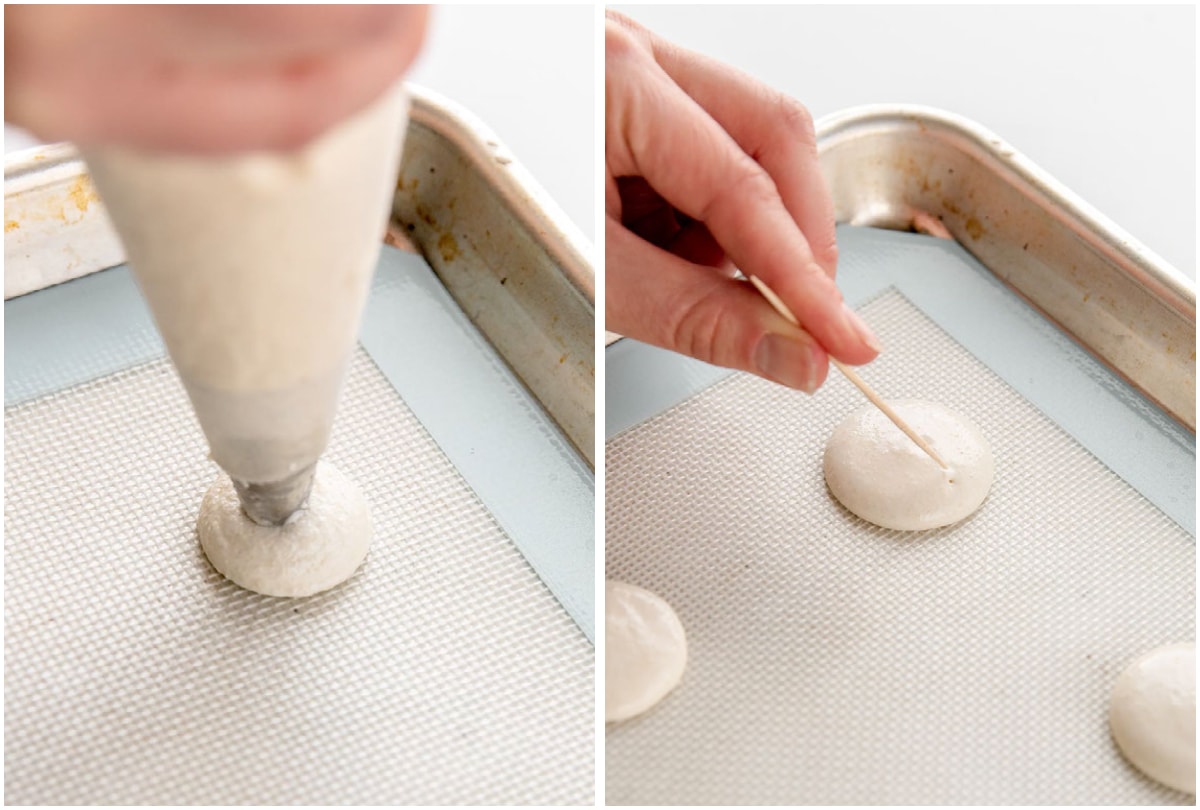
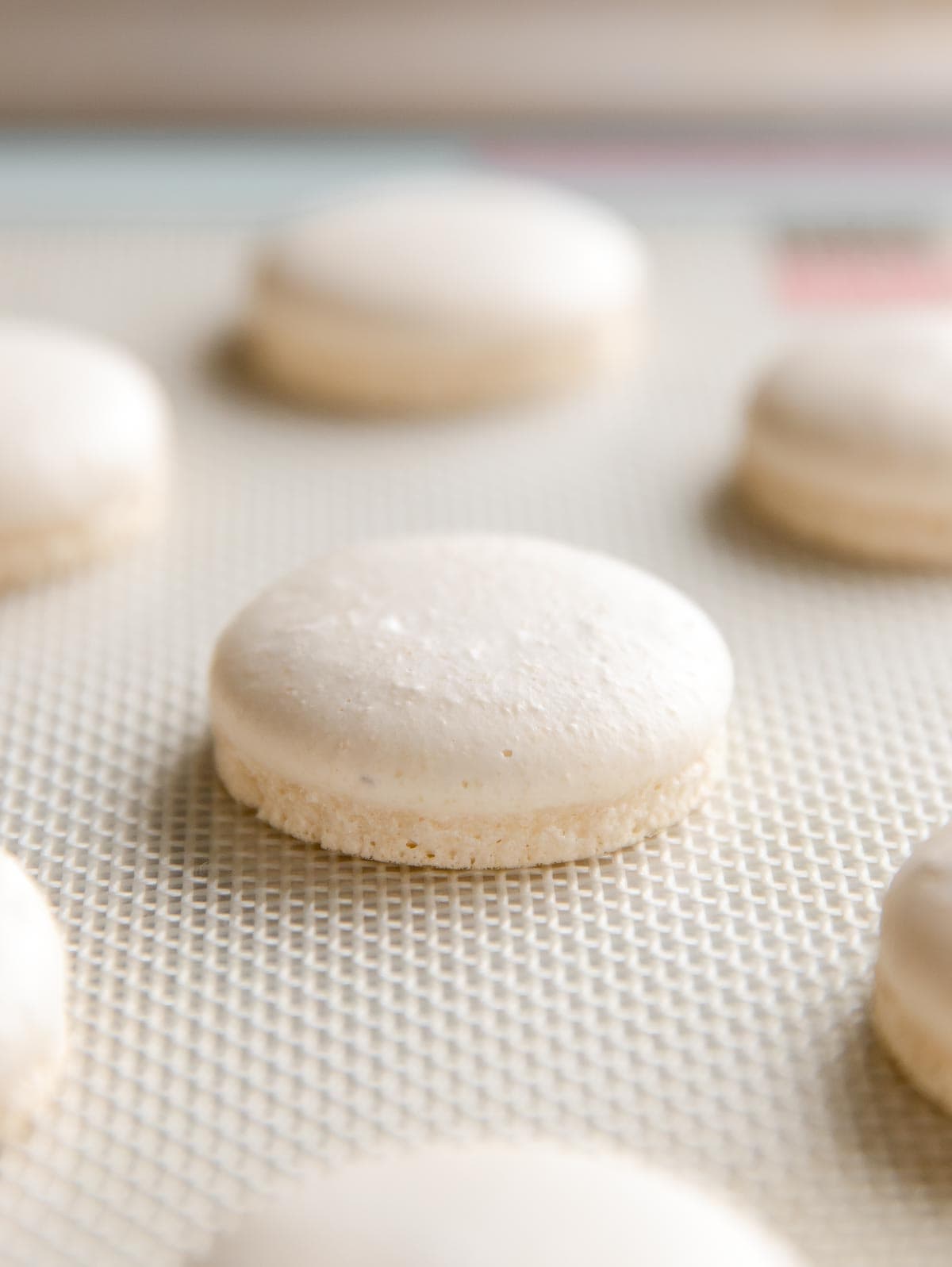
Tips for making macarons
Read the entire post before starting. Then read it again while making the macarons. Like I said, this is a finicky cookie and you may not get it right your first try. Best to be prepared! Weigh your ingredients. Macarons require exact measurements. This is the kitchen scale I own. Dehydrate your egg whites overnight. I tried this recipe without doing this step and it did not go well! Leave the egg whites in a container covered in plastic wrap with a couple big holes poked on top.
Whip until stiff peaks form. It’s easy to over-whip or under-whip the egg whites and sugar. You want a meringue consistency. I found that 5 minutes on medium-high speed (6 speed on the KitchenAid Stand Mixer) worked best. Fold in the dry ingredients until you achieve a lava-like consistency. Use a silicone spatula to scrape the edges and sides of the bowl, then cut through the center. The batter is done when it flows from the spatula like lava and can form a figure 8 without breaking.
Let the macarons dry before baking. After piping the batter onto the prepared baking sheet, the macarons have to dry for about 45 minutes. They are ready when gently touched and the batter doesn’t stick to your fingers (you can almost pet the macarons).
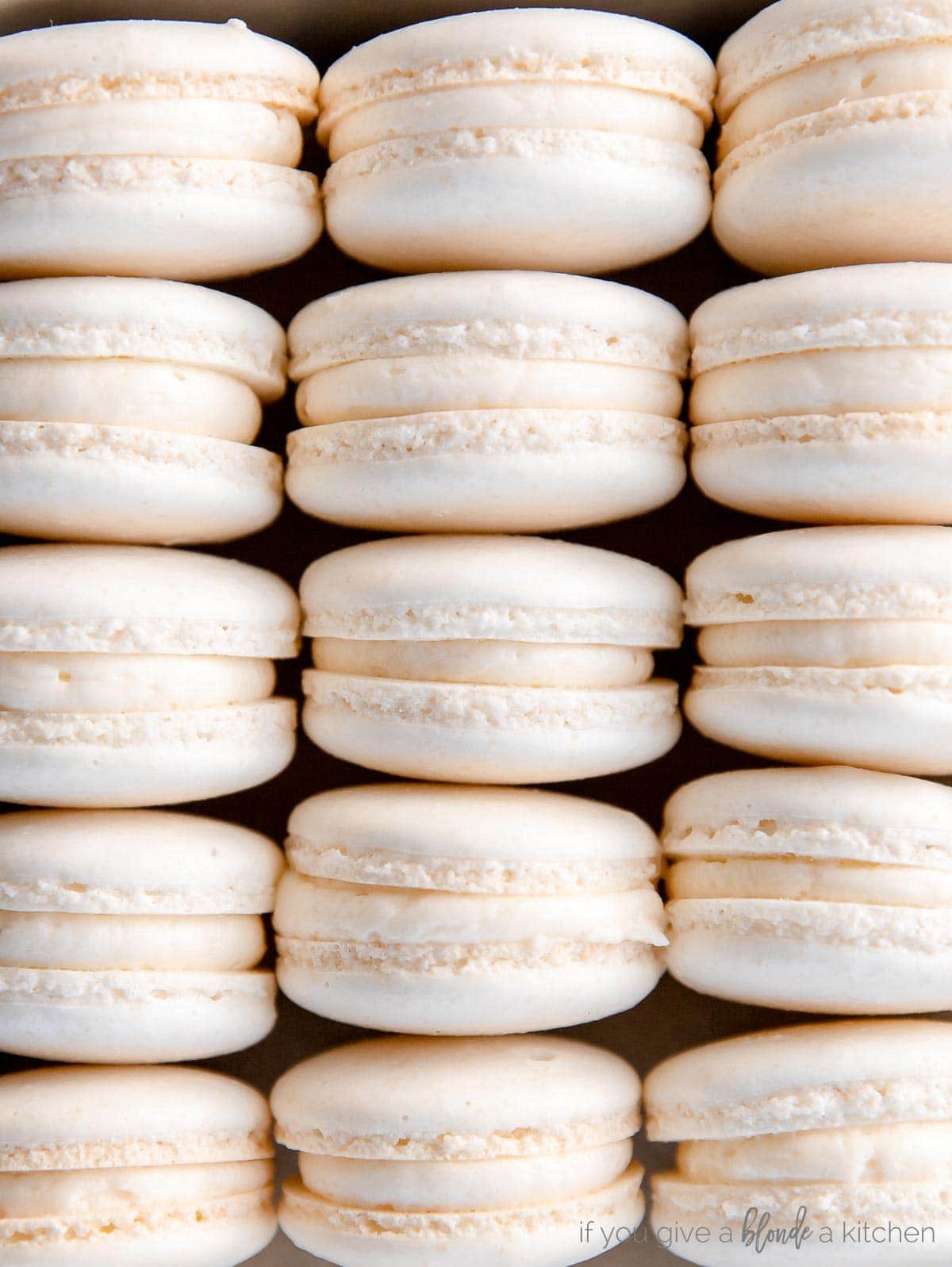
Frequently Asked Questions
They likely did not dry out enough before baking. Th exterior wasn’t strong enough to prevent the air bubbles from cracking the surface in the oven.
The egg whites and sugar were likely over-beaten past the stiff peaks stage.
The feet or ridge at the edge of the cookie, are formed from the careful mixing process known as macaronage. If the feet didn’t form, it’s probably because the batter is under-mixed when beating the egg whites or over-mixed when adding the dry ingredients. Another culprit is if they batter is too liquid-y (dehydrate the egg whites more).
That is probably a result of not sifting the almond flour well enough. Discard any clumps, don’t push them through the sifter.
Storage Tips
How long do macarons last? Macarons will last in the refrigerator for 5 days. If the filling is more liquid-y (such as a curd or jam) then I suggest assembling the day the macarons are served.
Can you freeze macarons? Yes. Wrap assembled macarons and place in an airtight container. Freeze for up to 3 months. You can also freeze the individual cookies. Store with parchment paper between layers so they don’t stick.
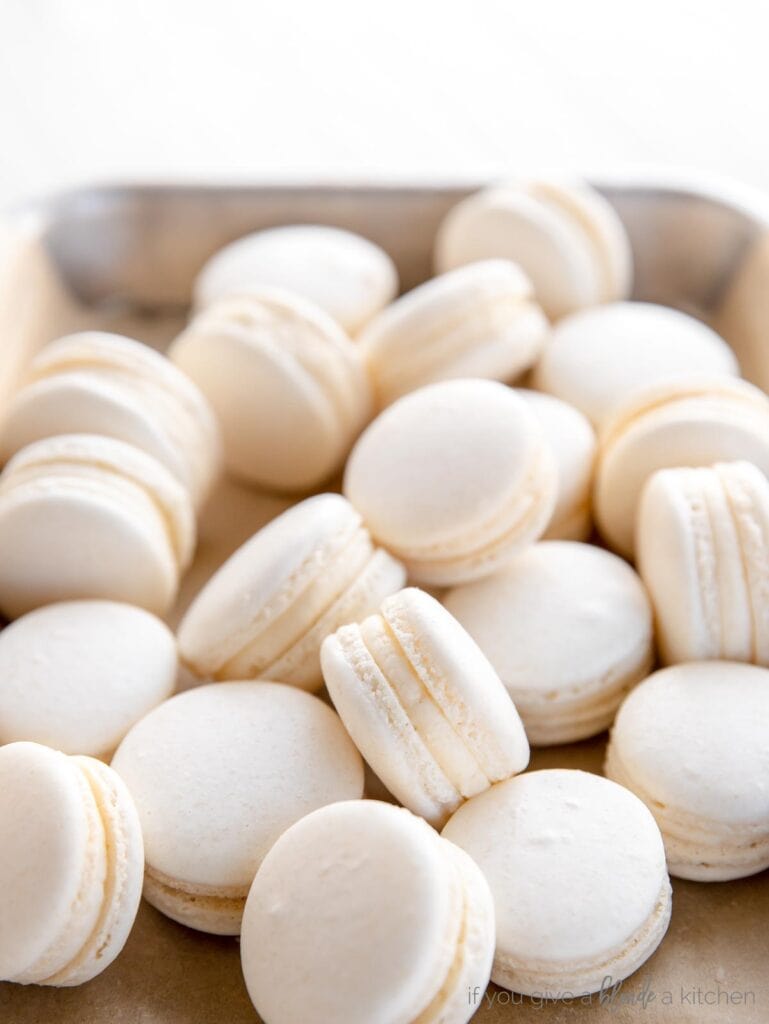
Learning how to make macarons is an art in itself, but once you’ve mastered the technique you will feel so accomplished! You could even paint macarons, like I do for pumpkin macarons. Be sure to read the tips for making macarons before getting started. If you ever have questions or need help troubleshooting, feel free to send me a message.
Related Recipes
Try these French sweets next!
Did you love this recipe? Please leave a 5-star 🌟🌟🌟🌟🌟 rating in the recipe card below and if you REALLY loved it, consider leaving a comment further down the page.
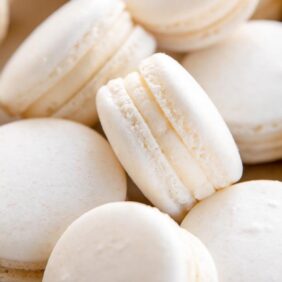
Get the Recipe: How to Make Macarons
Ingredients
- 100 g (about 3 large eggs) egg whites, room temperature
- 140 g (about 1 1/4 cups) fine almond flour
- 120 g (about 1 cup) confectioners' sugar
- 100 g (about 1/2 cup) bakers sugar, (granulated sugar works too, see notes)
- ¼ teaspoon cream of tartar
- ¼ teaspoon salt
- 1 recipe buttercream frosting
Instructions
- Place egg whites in a small bowl (make sure there is no trace of egg yolk). Cover with plastic wrap and poke a few large holes in it. Leave out at room temperature for 8 hours or in the refrigerator overnight. Bring to room temperature before using.
- Place confectioners' sugar and fine almond flour into a fine mesh sieve over a bowl. Sift and let the bowl catch the sifted ingredients. Discard any large clumps in the sieve. Repeat twice and set aside dry ingredients.
- Put egg whites in a very clean bowl of a stand mixer fitted with a whisk attachment. Whisk eggs on medium-low speed for a minute or two until frothy then add the cream of tartar and salt. With the mixer running, very slowly add the bakers sugar (either 2 teaspoons at a time or in a very slowly sprinkle into the bowl). Increase speed to medium-high and beat until stiff peaks form, about 5 minutes on KitchenAid Stand Mixer speed 6. Pro tip: The mixture will ball up in the whisk and the mixture will stay in the bowl if turned upside down.
- Add half of the dry ingredients to the mixing bowl. Use a silicone spatula to gently fold the dry ingredients into the wet ingredients. Once mostly incorporated, add the remaining dry ingredients. Continue folding by going around the sides of the bowl with the spatula, then cutting through the center. The batter is done when it has a lava-like consistency. Do not over-mix. Pro tip: Try lifting the spatula out of the bowl and forming figure 8 with the batter without it breaking.
- Transfer batter to a piping bag fitted with a round tip (about 1/2-inch in diameter). Pipe batter onto a silpat mat with macaron outlines or onto parchment paper. Pipe circles 1-inch wide and spaced 2 inches apart. Lift the baking sheet about 6 inches off the counter and drop it down. Repeat twice more, then rotate the pan 180° and bang the pans three more times (this releases air bubbles from the macarons).
- Let the macarons sit at room temperature for 40 to 45 minutes and up to an hour. The macarons are ready to bake when dry to the touch (you should be able to "pet" them without leaving a mark).
- Ten minutes before macarons are done drying, preheat the oven to 300° F. Bake macarons for 12 to 14 minutes, rotating the pan halfway through. Cool completely.
- Match up the cooled macarons according to size. Make your favorite filling, such as buttercream frosting, and pipe the filling between the cookies. Serve and enjoy!
Notes
References: Wilton and The Preppy Kitchen

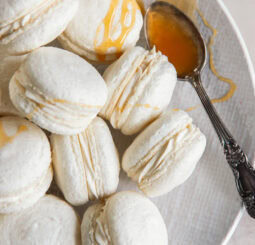
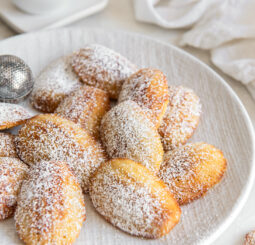

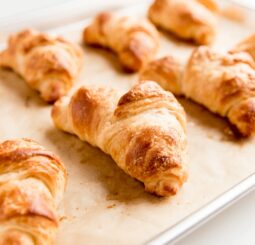


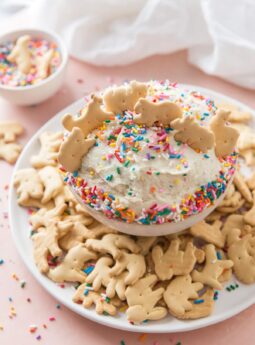
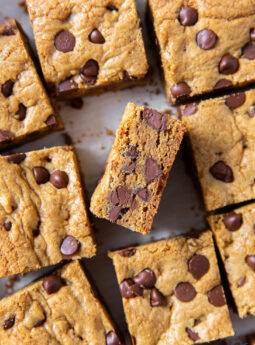
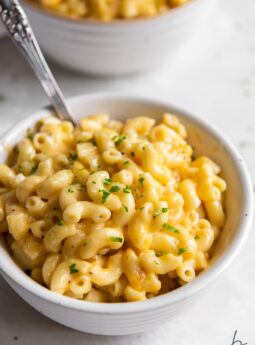
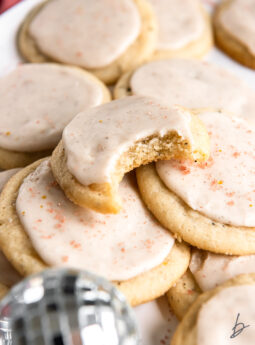

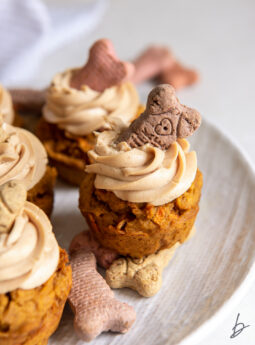
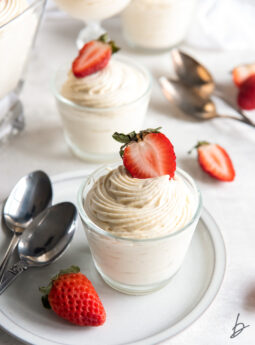

14 Comments on “How to Make Macarons”
how can l replace the cream of tartar? l can’t get it here, in my place.
perhaps lemon juice? and how much?
thanks for your response,
renata
Hi Renata – I think lemon juice or white vinegar will work (although I haven’t tried it myself). Try 1/2 teaspoon lemon juice for this recipe.
This recipe is wonderful and I’ve had a lot of luck with it! But no matter what I do I can’t get very many macarons (18 shells every time 😩) even using a 1-in template. Am I just piping too big?
Can I use pasteurized eggs for macaroon ?
Looking forward to attempting these for an upcoming cookie exchange! For the egg whites, is it 100g before aging/dehyrating, or after?
Weigh the egg whites before dehydrating
If I want to add food coloring, on what step do I add it?
Can you add vanilla extract to this with our ruining the texture?
Yes, I would start with 1/2 teaspoon and go from there.
Best recipe I have found so far!
How do you get your macarons so white?
Thanks in advance.
if i can not have nut flour can i use all purpose flour
Unfortunately you can’t make macarons with all purpose flour.
I’ve made these multiple times and they worked out very well. They also taste amazing!!! Me and my family love this recipe, we finish all of them in like a day lol